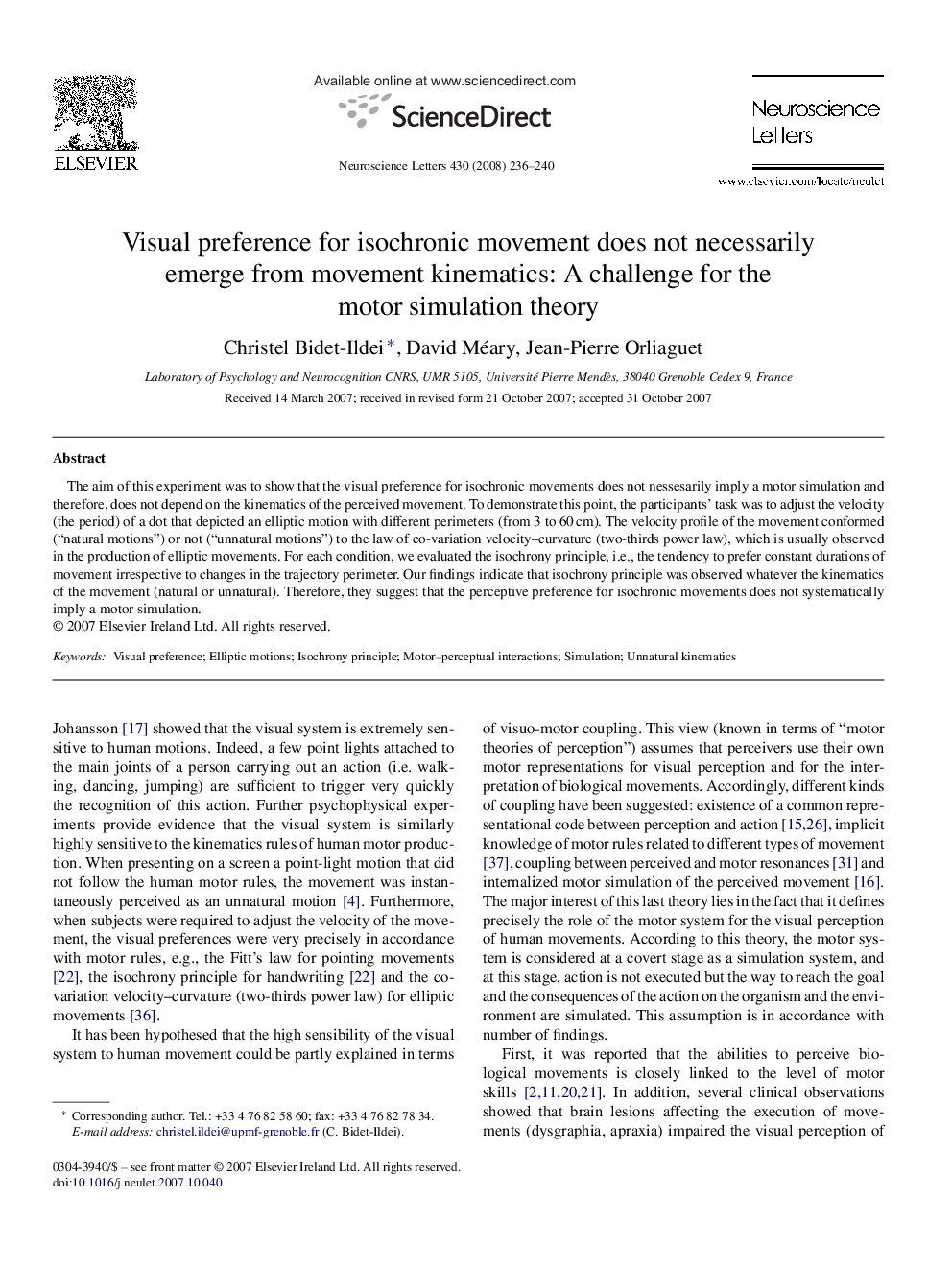| Article ID | Journal | Published Year | Pages | File Type |
|---|---|---|---|---|
| 4348847 | Neuroscience Letters | 2008 | 5 Pages |
The aim of this experiment was to show that the visual preference for isochronic movements does not nessesarily imply a motor simulation and therefore, does not depend on the kinematics of the perceived movement. To demonstrate this point, the participants’ task was to adjust the velocity (the period) of a dot that depicted an elliptic motion with different perimeters (from 3 to 60 cm). The velocity profile of the movement conformed (“natural motions”) or not (“unnatural motions”) to the law of co-variation velocity–curvature (two-thirds power law), which is usually observed in the production of elliptic movements. For each condition, we evaluated the isochrony principle, i.e., the tendency to prefer constant durations of movement irrespective to changes in the trajectory perimeter. Our findings indicate that isochrony principle was observed whatever the kinematics of the movement (natural or unnatural). Therefore, they suggest that the perceptive preference for isochronic movements does not systematically imply a motor simulation.
